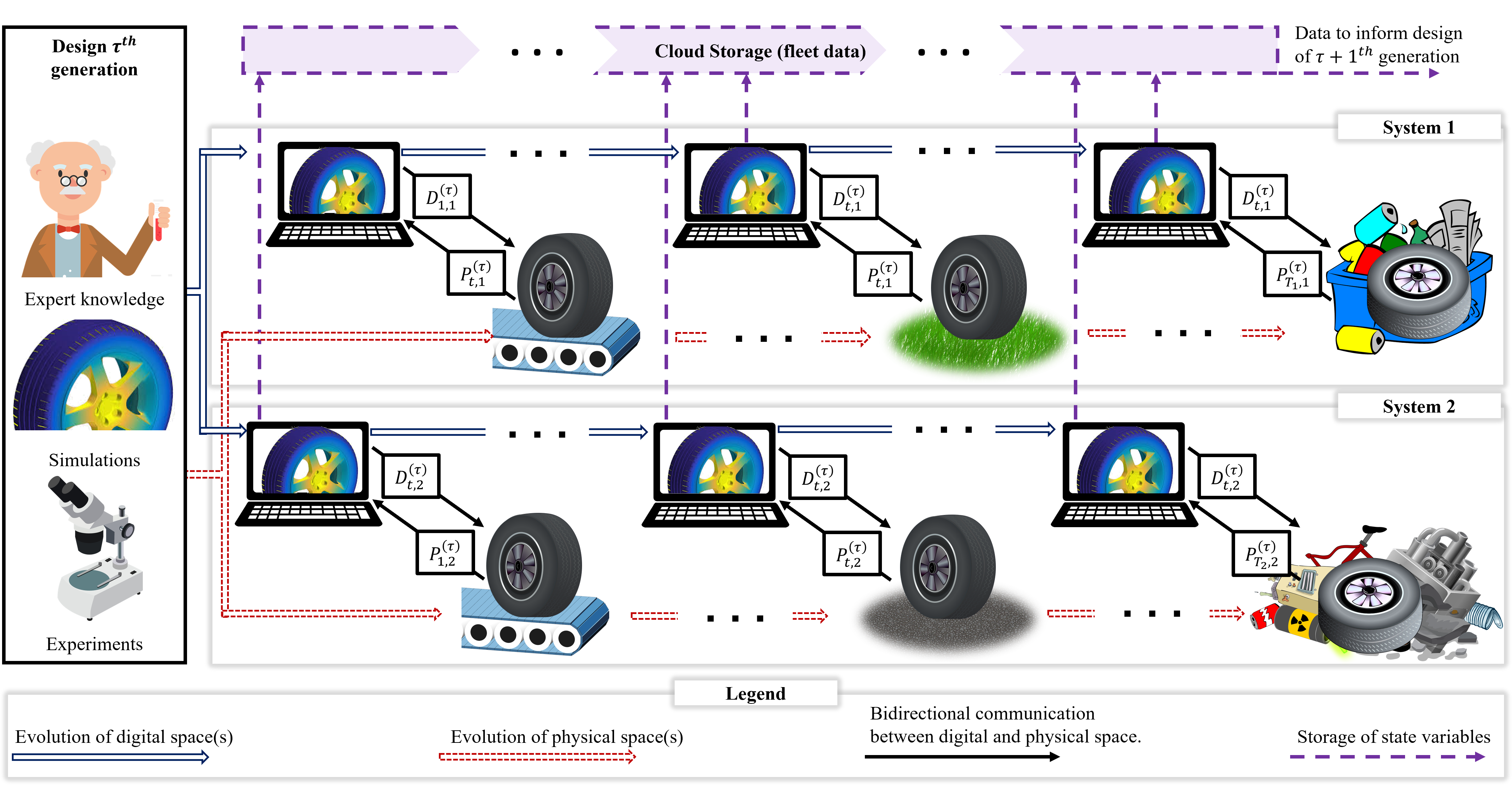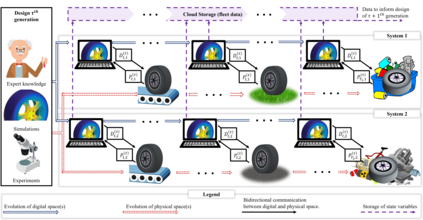The design and operation of systems are conventionally viewed as a sequential decision-making process that is informed by data from physical experiments and simulations. However, the integration of these high-dimensional and heterogeneous data sources requires the consideration of the impact of a decision on a system's remaining life cycle. Consequently, this introduces a degree of complexity that in most cases can only be solved through an integrated decision-making approach. In this perspective paper, we use the digital twin concept to formulate an integrated perspective for the design of systems. Specifically, we show how the digital twin concept enables the integration of system design decisions and operational decisions during each stage of a system's life cycle. This perspective has two advantages: (i) improved system performance as more effective decisions can be made, and (ii) improved data efficiency as it provides a framework to utilize data from multiple sources and design instances. From the formal definition, we identify a set of eight capabilities that are vital constructs to bring about the potential, as defined in this paper, that the digital twin concept holds for the design of systems. Subsequently, by comparing these capabilities with the available literature on digital twins, we identify a set of research questions and forecast what their broader impact might be. By conceptualizing the potential that the digital twin concept holds for the design of systems, we hope to contribute to the convergence of definitions, problem formulations, research gaps, and value propositions in this burgeoning field. Addressing the research questions, associated with the digital twin-inspired formulation for the design of systems, will bring about more advanced systems that can meet some of the societies' grand challenges.
翻译:系统的设计与操作通常被视为由物理实验和模拟数据提供的顺序决策过程,然而,整合这些高维和多样化的数据来源需要考虑对系统剩余生命周期的决定的影响。因此,这带来了一定程度的复杂性,在多数情况下只能通过综合决策方法加以解决。在本观点文件中,我们使用数字双轨概念来为系统的设计提出一个综合观点。具体地说,我们展示数字双胞胎概念如何使系统设计决定和业务决定在系统生命周期的每个阶段得以整合。这种观点有两个好处:(一) 由于可以作出更有效的决定,可以提高系统性能;(二) 提高数据效率,因为它提供了利用多种来源和设计实例数据的框架。从正式定义中,我们确定了一套八种至关重要的能力,以便根据本文件的定义,使数字双胞胎概念对系统的设计具有潜力。随后,通过将这些能力与关于数字双胞胎的现有文献进行比较,我们确定了一套研究课题的改进,并预测其概念设计可能给数字系统带来什么样的双重影响。我们从数字组合中找出了一套研究价值,从而预示着数字系统的潜在影响。







